Screenshot of Tuesday’s Eureka Council meeting.
###
After hearing an hour of impassioned and at times emotional public testimony at last night’s meeting, the Eureka City Council unanimously voted to approve the North Coast Substance Abuse Council’s plans for a short-term women’s residential treatment facility on Harris Street near Henderson Center.
The council’s vote upheld the Eureka Planning Commission’s Feb. 12 decision to approve the project, which was appealed to the city council by a group of Henderson Center residents who argued that the rehabilitation facility was incompatible with the surrounding neighborhood and posed a danger to people living nearby. However, some of those folks had a change of heart after learning that the facility’s executive director, Wesley Harrison, decided to make it women-only.
“I attended the planning commission meeting when this came up and it was proposed as a men’s facility,” said Eureka resident Marilyn Field. “I came here to ask if you were aware of [Dr. Deepak] Stokes’ women’s center going in just across the street from this, and that it would be a very bad fit for a men’s facility to be catty-corner from the women’s health center. But after hearing that it’s going to be for women, I think it’s a great idea.”
Street view of the proposed residential treatment facility. | Photo: City of Eureka
The “non-medical” rehab facility is slated for a 0.3-acre site, located just down Harris Street from the old Spotlight Video, with three existing buildings that would be used for short-term housing (between 30 and 120 days) for women recovering from substance abuse, individual/group counseling sessions and offices for staff. The facility would host a live-in manager and up to 12 residents at a given time. Patients will be subject to a background check and drug test before being admitted to the program and will be drug tested regularly during their stay to ensure eligibility for the program. The program will not admit sex offenders and arsonists.
The proposed facility would be considered a “Level 3.1” under the California Department of Development Services’ service level system, which ranks community care facilities on a scale of 1-4 according to the types of resources provided. The facility will not provide detox services but will focus on behavioral health and personal care to help patients maintain sobriety.
The North Coast Substance Abuse Council currently operates Crossroads, a state-licensed rehab facility on Myrtle Avenue, with 15 beds on the men’s side and five on the women’s. Speaking at last night’s meeting, Harrison said his waitlist for the women’s side is “probably a mile long.”
“There are individuals that have been waiting on my waitlist for well over 90 days,” he said. “There are individuals that are literally desperately calling every day hoping that somebody got discharged in order to be moved up on the list. The need far outweighs what resources we have available.”
Harrison noted that there have been “a lot of assumptions” and concerns about the project, referring to the people who were “all very certain that it was going to be a men’s facility.” Those concerns, as well as the facility’s proximity to the forthcoming women’s health center, influenced the North Coast Substance Abuse Council to focus on women.
“This will be our women’s project,” he said, adding that the facility will provide perinatal care for pregnant women. “We think it’s a wonderful opportunity to move the women over there because we understand that Dr. Stokes’ women’s health center is being built across the street. We know that Healthy Moms is two blocks away, which is an outpatient substance use treatment center that serves perinatal mothers. [We’ll be] right down the road from a domestic violence women’s shelter, and it’s a safe place for them to be.”
Responding to a question from Councilmember Renee Contreras-DeLoach, Harrison said the three buildings will have to undergo extensive interior and exterior renovations before anyone can move in.
“The paint jobs, the gutters, the cracked windows, the foundation, the wiring — I mean, there’s literally over $200,000 worth of work that needs to be done on it,” he said. “And then on top of that, there’s licensing and certification, and that process can take … up to six months. If everything were to go absolutely smoothly, I would hope for an [opening date] in July of 2026, but … I think January of 2027 is a much more realistic idea of when we’ll be opening our doors and putting our first lady over there.”
The project description notes that residents will be “contractually required to abide to strict rules” and will only be allowed to leave the facility with pre-approval from the live-in manager. Harrison added that residents can leave to attend AA or NA meetings, which, in the case of Crossroads, is just two blocks away.
“If anybody doesn’t return on time, there are consequences, and people can be removed [from the program] if they don’t return,” he continued. “Most of the time, these things happen without a hitch because they are cherished privileges by our population. … There’s this level of group accountability osmosis that happens where 90 percent of the population really, really doesn’t want to mess up, and … the one individual that maybe doesn’t have the best of intentions immediately gets weeded out.”
Councilmember G. Mario Fernandez also asked how patients are referred to the program and if they take in people who were recently incarcerated. Many Crossroads residents are referred by medical providers, but some people are referred by the county jail, Harrison said.
“I can’t discriminate based upon someone’s probationary status,” he said. “A lot of people will try to classify the population we serve as criminal. Whether we disagree on it or not, drug use is still a crime, and until it’s not a crime I will always be serving criminals no matter what their probationary status is.”
Asked about the frequency of 9-1-1 calls at Crossroads, Eureka Police Chief Brian Stephens said his department received nine calls for service at 1205 Myrtle Avenue in 2024.
“Three were medical aids, two were missing persons reports concerning the same person, one found animal, one absconder resident, and then two verbal arguments. They’ve only produced two to three case numbers a year since 2020 and about 11 calls for service on average from 2020. There’s more calls to service that happen at City Hall than do it these residential sites,” Stephens said, prompting laughter from meeting attendees. “Not trying to be funny, but I’m trying to put it in perspective that they’re not a problem with the police. … We don’t have the stats to show that there’s any increase in any type of criminal activity associated with these locations.”
Councilmember Scott Bauer added that he didn’t even know Crossroads was located on Myrtle Avenue. “I take that as a good sign [if] you don’t even know they’re there.”
Two dozen residents spoke during the public comment portion of the meeting, with the vast majority speaking in favor of the project. Several former Crossroads patients shared emotional recovery stories and praised Harrison and his staff for helping them to get their lives back on track.
“I was homeless, struggling with addiction, living in a homeless camp behind the mall, and I walked into Crossroads and met with Wes, the director, who took me in as a client that day,” said one woman who only identified herself as Chelsea. “This would not have been an option if there wasn’t a bed available [that day]. If I had been turned away, the chances are I wouldn’t have made it back to the program. The program has helped me to become [the] productive member of society that I am today.”
Several medical and child care providers, substance use counselors and social workers spoke as well, all of whom urged the council to approve the proposed plans and underscored the urgent need for more local rehabilitation services.
“I have seen firsthand the impact that facilities like these have had on people’s lives, and it is astronomical,” said Patricia, a local substance use counselor. “I see people who have gone successfully through these programs; they are re-entering the workforce, they are reuniting with their children and their families, getting their own places, furthering their educations, all kinds of really positive impacts on people. … This is so important, especially for mothers and pregnant women who need this help.”
Other residents said they were supportive of the project but felt it should be moved to another location. Henderson Center resident Jean Shepherd expressed particular concern for the woman-owned jewelry store next to the proposed facility, noting that the owner saved her money and opened her store “only to find out the city is moving ahead with a drug abuse recovery house and program located right next to her shop.”
“I want to make it clear that I have no problem with people going into recovery,” Shepherd said. “I have sympathy for people who struggle with drug abuse and need help. The problem here is the location. … I’ve heard the term NIMBY — not in my backyard — tossed around, and I will say I guess I’m a NIMBY. I think any homeowner would worry about trying to sell his or her home if a recovery house was next door.”
Following public comment, Councilmember Contreras-DeLoach made a motion to deny the appeal and uphold the planning commission’s approval of the project. Councilmember Leslie Castellano seconded the action, thanking Harrison and his team for being willing to engage with the community and address concerns about the project.
“I think that bodes really well for the work you’re doing, and the fact that addiction is a systemic problem, part of a community problem,” she said. “I appreciate the respect and sense of care that [the audience has] in being here … and in listening to one another and being willing to engage with the questions and change your minds, or reflect on your position.”
Councilmember Kati Moulton, her voice wavering with emotion, acknowledged people who have lost their battle with addiction and underscored the importance of getting people into treatment as soon as they are willing. “When that spark happens and somebody says, ‘I want to get my life right,’ that’s when you need to take advantage of that and give them that opportunity because any delay can cause … that demon to get right back on top of them,” she said.
Moulton also asked if the proposed project would be exempt from CEQA even though it involves renovations of a historic building. City Attorney Autumn Luna simply said, “Yes.”
Fernandez also spoke in favor of the project and called its opponents “disingenuous.”
“How is this not community-oriented care for the neighborhood? How is this reduc[ing] the unique characteristics of Henderson Center?” he asked. “For anyone to say that they support this type of program or facility, but not in a particular area or zone [is] being disingenuous. I’m sorry, where then, if not in my backyard or in our neighborhood? The transient nature of the population cycling in and out of the facility, the clientele doesn’t differ any than if it were a bed and breakfast.”
Councilmember Bauer thanked the group of speakers who spoke in favor of the project. “Your stories, I think, made our jobs a lot easier.”
“I talked to a doctor friend of mine today … and [asked] ‘Shouldn’t this be in a medical district or something?’ and he’s like, ‘Where? … I mean, it’s part of the community. You got to do it.’” Bauer said. “But realistically, you all made this decision so much easier. Just to hear these great stories, and then to see people change their minds based off of your real life situation.”
After a bit of additional discussion, the council approved the project in a 5-0 vote.
###
At the outset of last night’s meeting, Mayor Kim Bergel read a statement into the record aimed at addressing “misinformation” espoused during recent city council meetings regarding alleged police sweeps at local homeless encampments. Speaking in an uncharacteristically curt tone, Bergel attempted to dispel rumors that EPD officers are “harassing and stealing from our community members” and outlined the city’s protocols for clearing encampments.
“The procedures for ensuring public spaces are accessible to all of our community members is a very well-balanced process ensuring compassion and accountability,” she read from a prepared statement. “If the owner is present, EPD staff will provide the notice to vacate form, answer any questions and inform the owner of available local resources. … If the owner is not present, the notice to vacate form is left in a conspicuous area where it can be easily found upon the owner’s return.”
The tagged property is then photographed and stored, Bergel continued. EPD will not store items that are considered to be hazardous or trash, including perishable food items, soiled materials and drug paraphernalia.
“EPD uses sound judgment when determining an appropriate time frame, considering factors as the owner’s physical and mental condition, the amount of property, location and weather conditions,” she said. “I really felt compelled to bring that forward after our last meeting because there’s a lot of misinformation about what’s really happening. And so. just to clarify, our staff is doing a great job out there.”
###

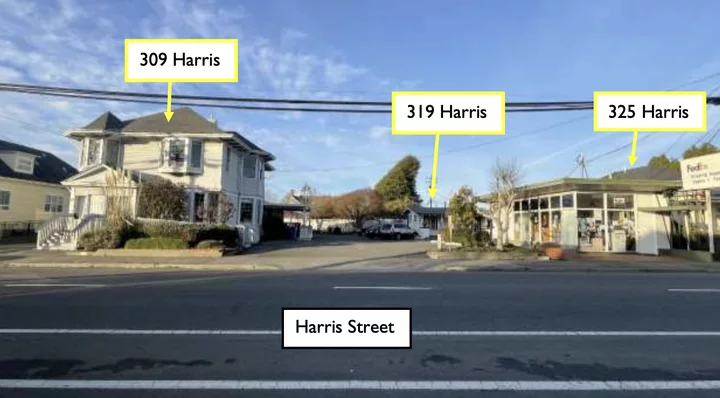
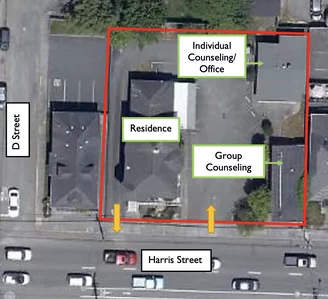
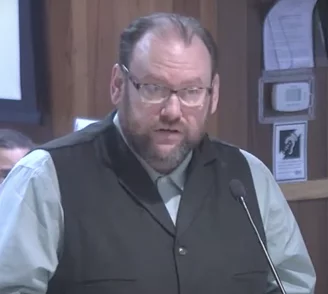
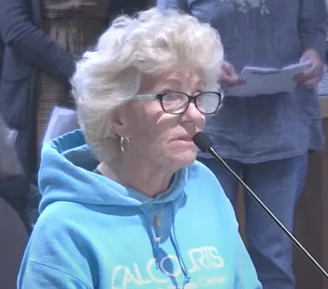
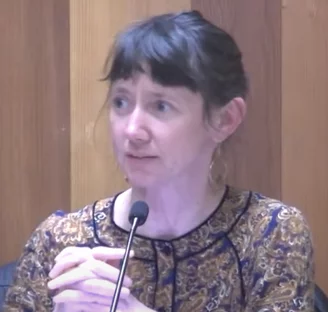
CLICK TO MANAGE